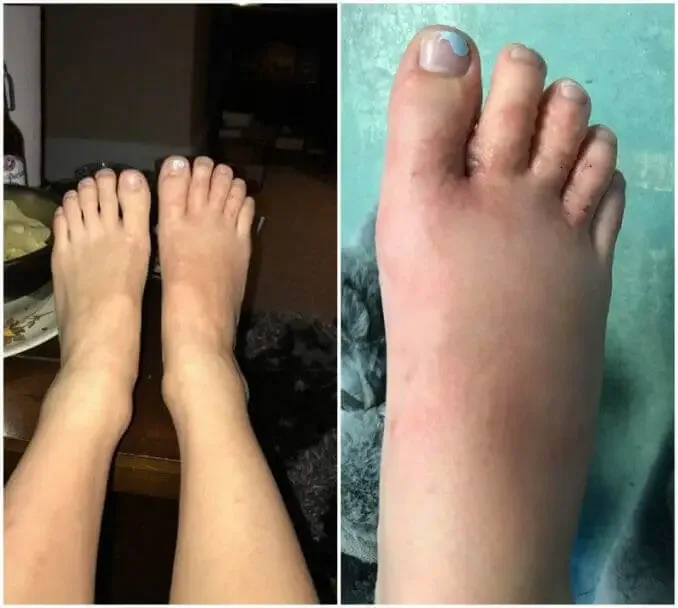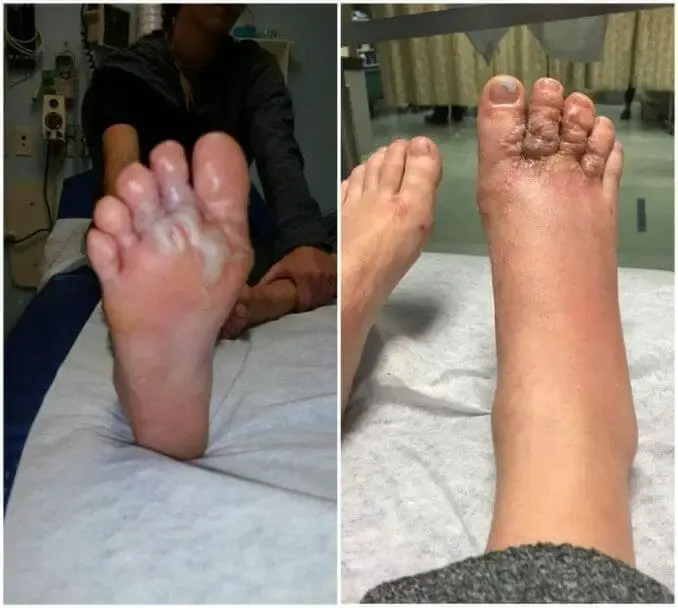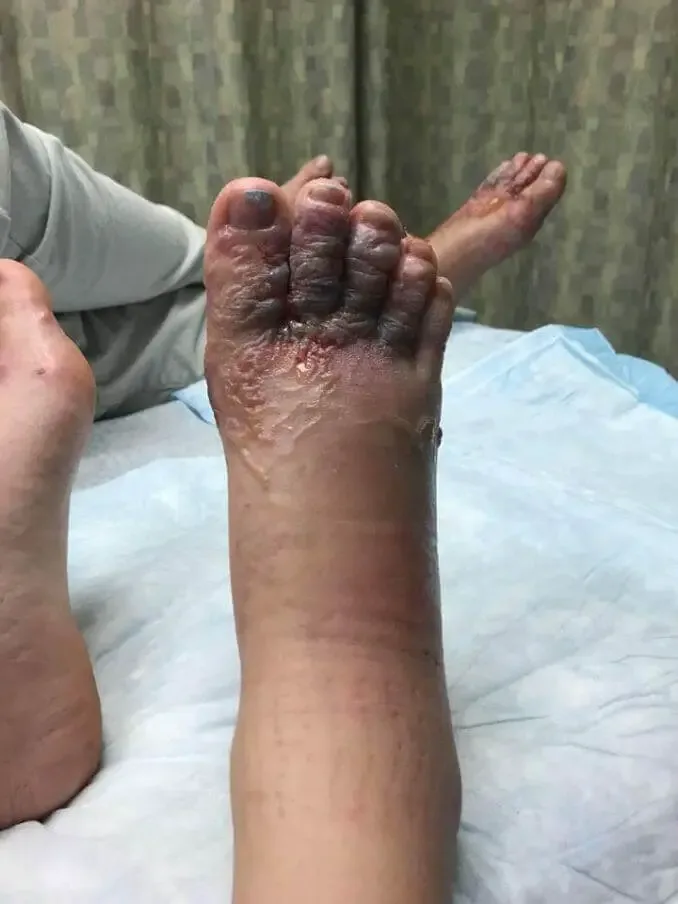Many couples like to indulge in a good walk on the beach. It’s romantic, charming, and a lot of fun.
That’s what Katie Stephens and Eddie Zytner hoped to enjoy while on vacation in the Dominican Republic to enjoy the Carribean sun.

When Eddie, 25, and Katie, 22, came back from their one-week holiday to Punta Cana, they couldn’t help noticing that their feet were very itchy.
First, they figured it was the fault of bug bites. But then the itchiness escalated into blisters, swelling, and bumps.

Realizing it may be more serious than it originally appeared, the couple took multiple trips to the hospital.
Each time, doctors could not definitively diagnose them.
Then, many weeks later, a total of three doctors were able to figure out the cause of the infection: baby hookworms, which had burrowed into their skin and caused a skin condition called cutaneous larva migrans, or CLM.

Pictures of the couple’s feet are definitely very difficult to look at, and they look rather icky.
But that’s the reality of the skin condition. When the hookworms get into feet, they lay larvae, and worms hatch out and live in the skin.
It causes unbearable itchiness due to inflammation caused by the worms and looks pretty nasty, resulting in blisters, rashes, and redness.

Hookworms are most commonly found in places with subtropical or tropical climates, and also along America’s southern areas.
Unfortunately, they can still be found everywhere else because of international travel.
If you walk along moist, warm sand – which describes most beach sand – hookworms may be able to find their way into your skin.

In most cases, these larvae aren’t able to live for very long, and they day within a few days.
Unfortunately for Katie and Eddie, their infections had been untreated for weeks, so all sorts of ruptures and blisters were popping up all over their feet.
The treatment they received became much more difficult too, when Health Canada would not allow them to get their necessary medicine, causing it to need to be brought in from the US. Eddie’s mother wound up making the drive to the US and back for the medication.

Is there any way to prevent this? Or should you steer clear of beaches forever?
The short answer is of course you can still do the beach.
Infectious diseases associate professor and medical doctor Daniel Caplivski, who works at the Icahn School of Medicine, Mount Sinai, recommends wearing shoes so your feet can be protected when you’re at the beach.
Lie on a towel and not straight on the sand. You should be especially cautious of beaches with a lot of animals, including pets.

If you happen to develop itchiness on any part of your body after a trip to the beach, your best bet would be to see a doctor as soon as possible.
Katie decided to share these harrowing pictures on Facebook to raise awareness of this danger, allowing others to steer clear of things that may cause this to happen.
